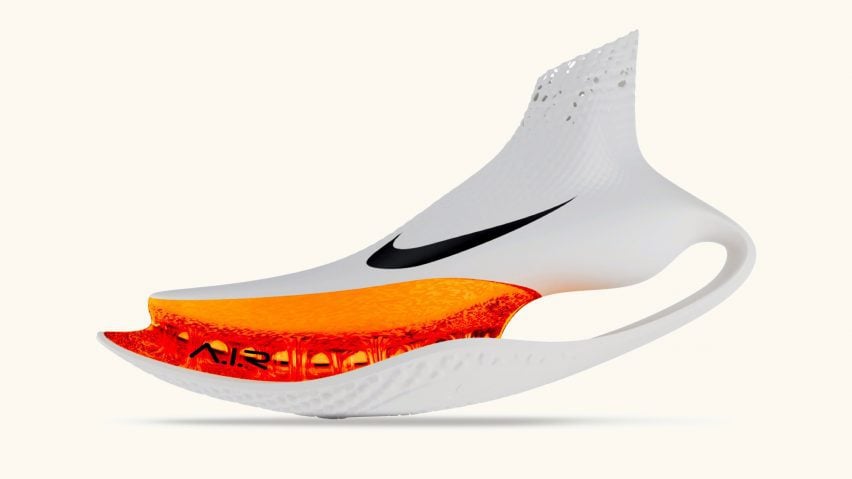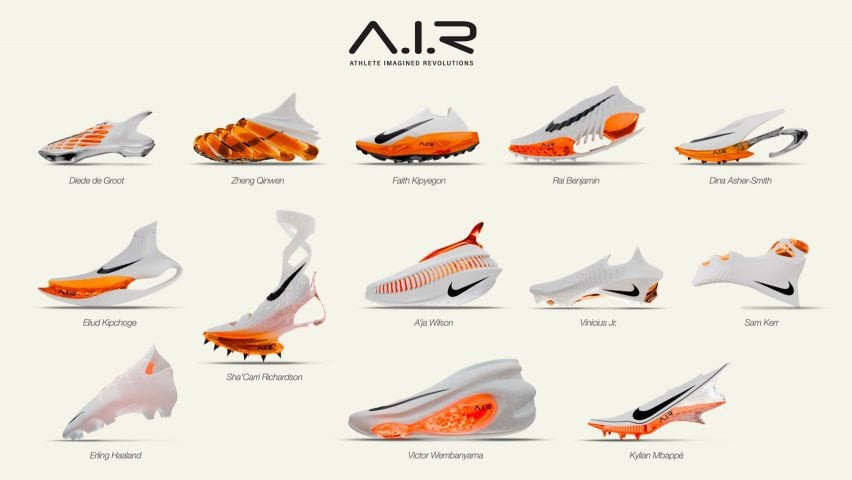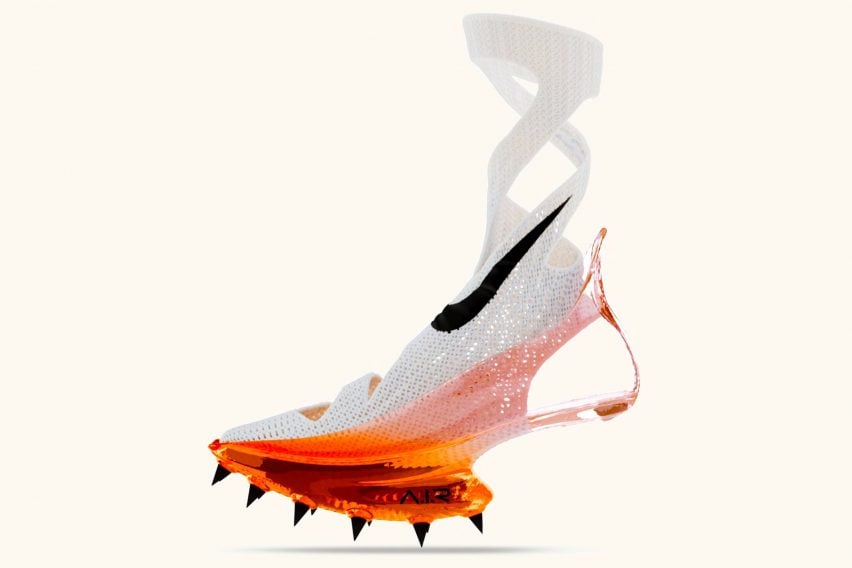
Nike developing AI model as part of design "step change"
Sportswear brand Nike is developing its own generative AI model to design products using its vast bank of athlete data, Dezeen can reveal.
According to Nike's chief innovation officer John Hoke, the company is seeking to take advantage of its exclusive data on athlete performance with a bespoke large language model (LLM).
LLMs are a text-based form of artificial intelligence (AI) trained to recognise language patterns. The best-known example is OpenAI's ChatGPT.
Nike building AI "private garden"
"We use all the LLMs that are out there and we do have a model that we're building in-house," Hoke told Dezeen.
"It's a little bit of thinking about developing a private garden, of looking at our own datasets that are exclusive to Nike – so performance data from an athlete, from our laboratories, et cetera. And then kind of commingling that with some things from the public garden, but making sure that that's all contained within what we're training the model on."
The name of Nike's AI model is yet to be finalised.
Hoke spoke to Dezeen at a recent Nike event in Paris, where the brand unveiled its new collection of elite sports footwear ahead of the 2024 Olympic Games, which take place in the French capital this summer.
The company also showcased Athlete Imagined Revolution (AIR), a project that saw the design team create prototype shoes for 13 of Nike's top athletes – including US sprinter Sha'Carri Richardson and French footballer Kylian Mbappé – based on their requests and personalities.

Prompts based on the athletes' preferences were inputted into generative AI models to create hundreds of images that Nike designers then rapidly honed down into single concepts using other digital fabrication techniques including 3D sketching and printing.
"I would call this a new alchemy of making product at Nike," said Hoke.
"And that is taking the athletes' dreams, going deep into their personality, understanding what they're all about, adding that with our own imagination, our own intentions and those emerging technologies – AI and computational design – and kind of converging these together."
World Athletics regulations dictate that shoes used in competitions must be widely available, so it is not clear whether this hyper-personalised approach will ever make it to the track at tournaments.
"All the sports are governed by the proper regulations, and that governance is critically important to us," said Hoke. "We're not seeking an unfair advantage."
However, he hinted that Nike will continue to pursue the potential competitive benefits afforded by customised athlete products.
"It's an extension of who they are," he said. "I think that would give them both a physical advantage, but also a psychological and emotional advantage – that this is just an extension of my anatomy, it's my movement signature, it's my body being amplified with these products."
"I think what AIR represents is a step change in the way we design and manufacture."
Technology such as AI, virtual reality (VR) and 3D printing is an important part of this shift, according to Hoke, as it drastically expedites the prototyping process.
"There's this larger idea of quantum creativity of the future, which is being able to take in vast amounts of information, and use new technologies to do things very quickly," he said.
"So you sort of balance the velocity and the fidelity right here. And what usually takes weeks or months to show an athlete now takes hours. So they're really engaged because they're either seeing it in VR or we're sending them a 3D print, we're showing them on-screen."
AI is "rocket fuel for creativity"
Generative AI refers to AI models that create different types of content – such as text, images, video and code – by extrapolating from data they have been trained on.
Nike's investment may be seen as a vote of confidence in the technology after generative AI went through a process of extreme market excitement, followed by concern about implications for the creative industries and increasing scepticism from some experts in 2023.
"I don't think in our case of designers, it ever replaces creativity," said Hoke. "I think it is certainly rocket fuel for creativity. It certainly expands my own imagination to be able to do and see things in minutes and seconds versus weeks and months."
"And I've got to come to this equilibrium, where I think it's an amazing tool guided by a human's imagination," he added. "It's idle until you engage it."
Most of the doubts around the usefulness of generative AI revolve around models' tendency to make errors, known as hallucinations.

"For me, as a designer, I'm unafraid of that," said Hoke. "I think it's part of the magic of being able to stand back and discern what's coming at you."
"Errors and hallucinations don't scare me here. I think it's a different way of looking and it opens the aperture of my own creativity."
Other notable advocates of using generative AI in design are Zaha Hadid Architects principal Patrik Schumacher and Airbnb co-founder Brian Chesky.
Meanwhile, Australian design practice Studio Snoop last year unveiled Tilly Talbot, a specialised LLM that it branded "the world's first AI designer".
All imagery is courtesy of Nike.